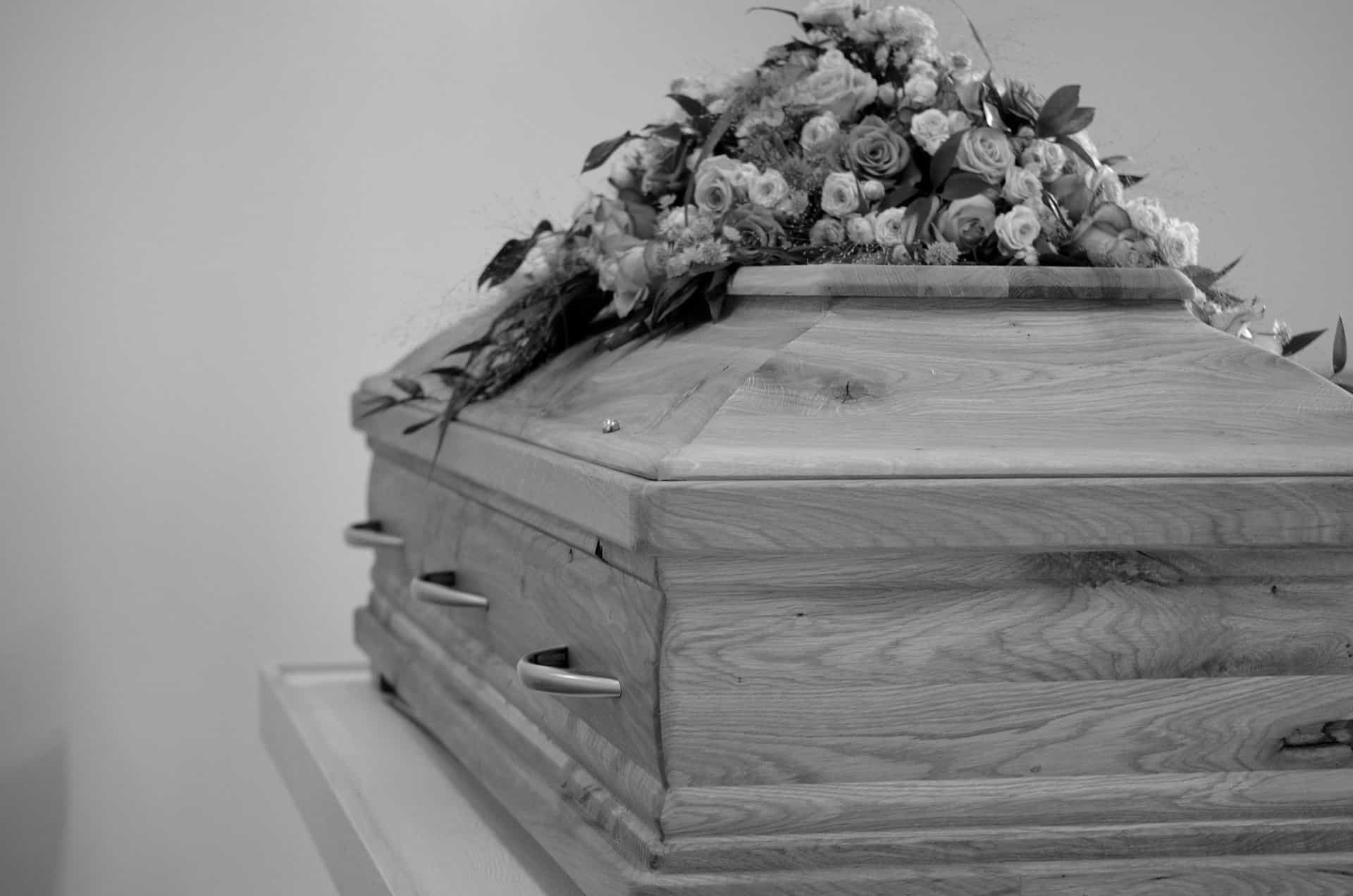Welcome to our article about what happens when the curtains close at a crematorium. We understand that this can be a sensitive topic, but it is important for families and loved ones to have an understanding of the process that takes place after a cremation service.
Once the service has concluded and the mourners have left, the deceased is taken into the crematorium chapel. The curtains are then closed as a sign of respect before the cremation process begins.
Many people often wonder what happens during this time, and in this article, we will provide insight into the process that takes place behind closed curtains. So, let’s take a closer look at what goes on after the curtains close at a crematorium.
The Importance Of Proper Identification And Paperwork
As the curtains close at a crematorium, the process of preparing the cremation chamber begins. The cremation chamber design plays a crucial role in ensuring a respectful and dignified farewell to your loved one. Modern cremation chambers are designed with environmental impact in mind, ensuring minimal emissions and maximum efficiency.
At this stage, proper identification and paperwork are vital to ensure that the correct individual is being cremated. It is essential to verify all information before proceeding with the cremation process.
Let us dive deeper into why proper identification and paperwork are crucial in the next section.

Choosing The Right Words To Honor Your Loved One
Proper identification and paperwork are crucial components of the cremation process. In order to ensure that the remains returned to families are indeed those of their loved ones, a strict identification protocol must be followed. This includes labeling the body with unique identifiers, such as a wristband or ankle tag, that remain with the individual throughout the entire process.
Not only is proper identification important for ethical reasons, but there are also legal ramifications if mistakes are made. The Cremation (England and Wales) Regulations 2008 state that it is illegal to cremate a body without proper authorization and appropriate identification.
Additionally, incorrect documentation can lead to delays in the cremation process and potential legal action from family members who may question the validity of the remains being returned to them. Therefore, it is imperative that funeral directors and staff take every precaution necessary to ensure accurate identification and appropriate paperwork is in place before proceeding with a cremation.
As important as proper identification is in the cremation process, so too are temperature and time requirements for cremation.
Temperature And Time Requirements For Cremation
After the proper identification and paperwork, the curtains close at the crematorium. The finality of the moment can be overwhelming for those left behind. As the cremation process begins, it is important to understand the temperature and time requirements for a successful outcome.
The environmental impact of cremation has become a point of conversation in recent years. Some cultures view cremation as a negative impact on the environment while others see it as a better alternative to traditional burial methods. It is important to understand cultural differences and beliefs when making decisions regarding end-of-life plans.
Environmental impact:
- Cremation releases carbon dioxide and other pollutants into the air.
- Some crematoriums have implemented green cremations that use less energy and produce fewer emissions.
Cultural differences:
- In some cultures, cremation is not accepted due to religious beliefs.
- Others may view it as an essential part of their culture’s funeral practices.
As we move forward with handling remains after cremation, it is important to consider these factors and make informed decisions about what is best for our loved ones and for our planet.
Handling Of Remains After Cremation
Once the curtains close at a crematorium, the cremation process is complete. The remains are then carefully collected from the chamber and placed in a container, typically made of metal or cardboard. This container is sealed and labeled with identifying information such as name, date of birth, and date of cremation.
After the remains have been collected, families can choose from a variety of options for handling them. Many families opt to scatter their loved one’s ashes in a special location or hold an ash scattering ceremony. Others may choose to keep their loved one’s ashes close by using cremation jewelry options such as pendants, rings, or bracelets that contain a small amount of the ashes. Whatever the choice may be, it is important to take time to consider all options and make an informed decision that honors and respects the memory of your loved one.
As families navigate through this difficult time, it can be helpful to explore options for disposition of ashes. From traditional burial to scattering at sea, there are many ways to honor your loved one’s memory and find peace in their passing. Let us help guide you through these options so that you can make the best decision for you and your family.
Options For Disposition Of Ashes
Now that the cremation process is complete, what happens next? When the curtains close at a crematorium, it may leave some wondering about what comes next for their loved one’s remains. In this section, we will explore different options for disposing of ashes and how to choose an urn that best suits your needs.
Firstly, selecting an urn can be a difficult decision as there are many types and materials available such as ceramic, wood, metal or even biodegradable options. When choosing an urn, consider the following factors:
- The size of the urn needed to fit all the ashes
- The style of the urn and if it reflects your loved one’s personality
- The location where the urn will be displayed or stored
Secondly, a scattering ceremony is another option for disposing of ashes. This allows you to scatter your loved one’s ashes in a meaningful location such as a favourite park or beach. It is important to note that permission may be required from local authorities before scattering ashes in public places. A scattering ceremony can also include a personalised ritual or service to honour your loved one’s memory.
Overall, there are various ways to dispose of ashes and selecting an urn and organising a scattering ceremony can be a personal and reflective process.
At Funeral Services UK, we understand the importance of finding closure after losing a loved one and we are here to support you through each step of this journey.
Frequently Asked Questions
What Is The Average Cost Of A Cremation?
Looking for an affordable way to lay your loved one to rest?
Cremation is a popular option, with the average cost in the UK ranging from £500-£800.
At our funeral service, we offer a variety of cremation urns to choose from, including eco-friendly options made from sustainable materials.
And if you’re looking for a more environmentally conscious approach, we also offer green cremation options that minimize the impact on the planet.
Contact us today to learn more about our cremation services and how we can help you honor your loved one’s memory in a meaningful way.
How Long Does It Take To Plan A Cremation Service?
Planning a cremation service may seem like a daunting task, but with the right guidance and support, it can be done smoothly and efficiently.
One common question that arises is how long it takes to plan a cremation service. The planning timeline typically depends on various factors such as the availability of the crematorium, scheduling of the funeral director, and preparation of necessary documents.
However, in general, it usually takes around one to two weeks to complete all the cremation preparations.
At our Funeral Service website, we understand that this process can be overwhelming for families during their time of grief. Our compassionate team is here to assist you every step of the way to ensure that your loved one’s final farewell is as special and meaningful as they were.
Can Multiple Bodies Be Cremated At Once?
Efficiency concerns and cultural differences can arise when considering the cremation of multiple bodies at once.
While it is legal in the United Kingdom to perform mass cremations, some cultures may view this as disrespectful and prefer individual cremations.
However, from an efficiency standpoint, performing multiple cremations simultaneously can save time and resources for the crematorium.
It is important to discuss these options with your funeral director and consider any cultural or personal preferences before making a decision.
What Happens If A Family Member Disagrees With The Decision To Cremate?
When a family member disagrees with the decision to cremate, it can be a difficult and emotional time for everyone involved.
The grieving process is already hard enough, but now there are legal implications to consider as well.
It’s important to remember that everyone has their own beliefs and values when it comes to funeral arrangements.
Symbolism can help us understand this better – just as we all have different curtains in our homes that represent our unique tastes, so too do we have different ways of approaching death and mourning.
At Funeral Service, we understand the importance of respecting these differences while also ensuring that all legal requirements are met.
Our team is here to support you through this challenging time and help you navigate any disagreements that may arise.
Can Personal Items Be Cremated With The Body?
Personal items can be cremated with the body, depending on the cremation rituals and cultural differences.
In the United Kingdom, it is common for personal items to be placed inside the casket or coffin before cremation. These may include jewelry, photographs, notes, and other sentimental objects that hold significant value to the deceased and their loved ones.
However, it is important to note that some cultural beliefs may prohibit certain items from being included in the cremation process. It is best to consult with a funeral director or religious leader for guidance on what items are appropriate for cremation.
Conclusion
So, what happens when the curtains close at a crematorium? Well, let me tell you, it’s not just a simple funeral process of burning a body and scattering the ashes. No, my dear friends, it is so much more than that.
Firstly, the average cost of a cremation can vary from £500 to £1,000 depending on your location and the services you require. And let’s not forget about the planning process. It takes time and effort to ensure that everything runs smoothly during the service.
But what about multiple bodies being cremated at once? Yes, it does happen, and it’s not as uncommon as you may think. And if there are any disagreements within the family about the decision to cremate, well, things can get messy. And let’s not forget about personal items being cremated with the body – it’s something that many people don’t consider until it’s too late.
In conclusion, when it comes to what happens when the curtains close at a crematorium, there is much more than meets the eye. It’s a complex process that requires careful consideration and planning.
So next time you attend a funeral service or consider your own end-of-life plans, remember that there is much more to this final act than just saying goodbye.


